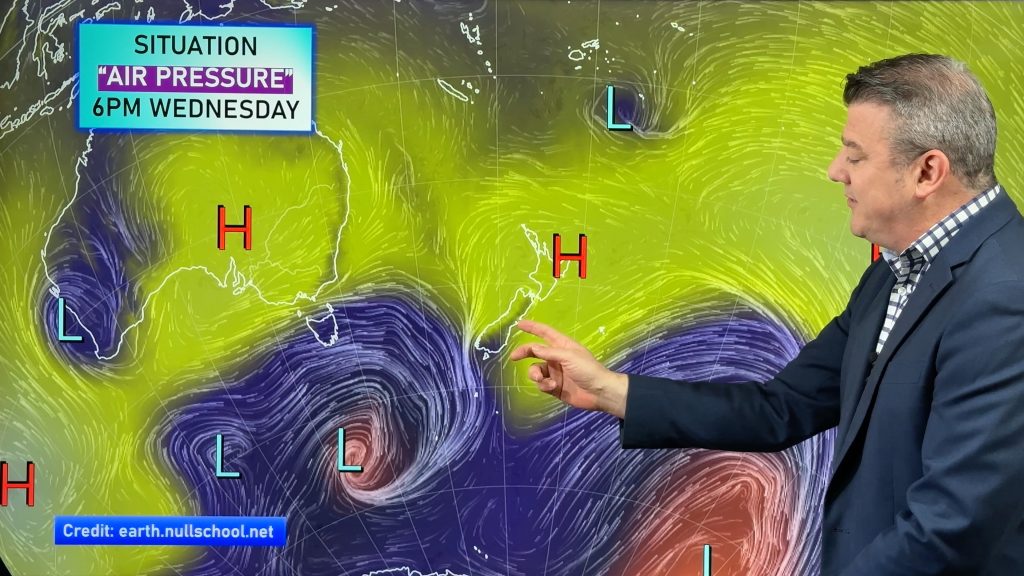
> From the WeatherWatch archives
We’re still seeing the consequences of a hot, dry summer during the early part of March with drought zones being declared but how was the season as a whole?
Sunshine and dry conditions with warm temperatures seemed to be a big feature but in reality was that the case?
We take a look…
Summer saw higher pressures than normal over the Tasman Sea and New Zealand region, with more of a southwesterly airflow than normal over the country.
The frequent ‘highs’ over the country produced a very sunny summer for most of the country, and extremely dry conditions over most of the North Island.
It was an extremely dry summer for much of the North Island.
Many North Island regions recorded rainfall totals around half of summer normal. However, parts of Northland and north Auckland, the Bay of Plenty (including Taupo), and areas of the Hawkes Bay and Wairarapa only received around one third (33%) of normal summer rainfall.
It was a record-dry summer for Whakatane, Taupo, Motu (Gisborne ranges), Masterton, and Waione (Tararua District). Other relatively dry regions included Canterbury and Westland, with below normal summer rainfall (between 50 and 70 percent of summer normal).
In contrast, South Taranaki through to Wellington experienced closer to normal summer rainfall, as did much of Otago, Southland and Fiordland. Marlborough and the Kaikoura Coast, as well the alpine area around Mt. Cook, experienced a wetter than usual summer.
It was an extremely sunny summer for much of the country (south of Hamilton), with numerous summer sunshine records broken. It was the sunniest summer on record for Te Kuiti, Turangi, New Plymouth, Dannevirke, Martinborough, Hokitika, Greymouth, Mt Cook, Cheviot, Ashburton, Lake Tekapo, Cromwell, and Balclutha.
Most parts of the country had average summer temperatures but there were some exceptions.
Parts of Auckland, Waikato, Bay of Plenty, Hawkes Bay, Wairarapa, coastal Canterbury, Otago, and Southland recorded mean temperatures between 0.5°C and 1.0°C above average, and much of the Central North Island recorded temperatures between 1.0°C and 1.5°C above summer average. The nation-wide average temperature in summer 2012/13 was 17.0°C (0.4°C above the 1971-2000 summer average), using NIWA’s seven-station temperature series which begins in 1909.
Further Highlights:
• The highest summer temperature was 35.1°C, recorded three times during summer: at Clyde on 5 January, and at Gisborne on both 9 and 10 January.
• The lowest temperature was -1.7°C, recorded at Motu on 1 December.
• The highest 1-day rainfall experienced was 346 mm, observed at Mount Cook on 9 January
• The highest gust recorded was 206 km/hr at Cape Turnagain, on 2 December.
• Of the six main centres in summer 2012/13, Auckland and Tauranga tied for the warmest, Tauranga was the sunniest, Christchurch was the driest, Wellington was the wettest, and Dunedin the coolest.
WeatherWatch & NIWA
Comments
Before you add a new comment, take note this story was published on 6 Mar 2013.





Add new comment
Guest on 6/03/2013 7:29am
Just wondering how the dry conditions will effect our power supply. Nobody is saying anything.about the lake levels?
Reply
WW Forecast Team on 6/03/2013 7:40am
Dams we’re hearing are doing ok after a big top up in the south early January however the West Coast is now very dry and each day without any rain is a concern.
Cheers
WW
Reply